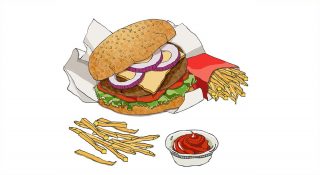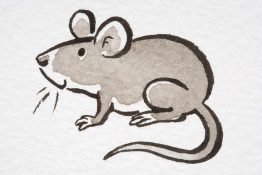By Harriet Mallinson | Published on June 21, 2017
We’ve all been there. You’re just settling in to an evening telly session with the latest gripping Scandi drama, when boom, there’s an ad break and the most delicious looking pizza is gliding across the TV screen.
Forget macro counting, you’re suddenly dying for a slice of cheesy goodness.
It’s well documented that food-associated visual cues in our environment can stimulate our appetite. Unfortunately, some people are simply unable to resist these cravings, even if they’ve already eaten. But what if there was a way to undo this process?
New research published in the journal Nature could pave the way to quashing food cue-evoked yearnings, which could be particularly beneficial for people struggling with obesity.
Scientists at Beth Israel Deaconess Medical Center (BIDMC) in Boston, US, developed a new approach to imaging and manipulating particular groups of neurons in the mouse brain and identified a pathway by which neurons that drive hunger influence distant neurons involved in the decision of whether or not to react to food-related cues.
“To put it simply, when you’re hungry, the picture of a cheeseburger may be extremely appealing and effective in influencing your behavior,” explains lead author Yoav Livneh.
“But if your belly is full after eating a big meal, the same cheeseburger picture will be unappealing. We think that the pathway we discovered from hunger-promoting neurons to a region of the brain called the insular cortex plays an important role here.”

The insular cortex is involved in deciding if a source of food is worth pursuing. In heathy humans, it increases activity in response to food cues in hunger, but not after a meal.
However, studies show that this process can go wrong in patients with obesity or other eating disorders that exhibit excessive cravings. This means that instead of a simple lack of willpower, an inability to refuse food is due to specific changes in brain activity, including increased sensitivity to food cues.
In the BIDMC study, scientists focused on the insular cortex, using a mouse model. Incredibly, because the mouse insular cortex is located at the side of the brain in a hard-to-reach place, the team pioneered the use of a tiny periscope that allowed them to see neurons in this previously unobservable part of the brain.
– RELATED: 6 Foods To Curb Your Cravings –
They then tracked and monitored the mice to see how they responded to food cues in both sated and hungry physiological states.
The mice would eat until they were full, but, when the researchers ‘turned on’ hunger-promoting Agouti-related protein (AgRP) neurons in the hypothalamus, they would seek more food.
“These AgRP neurons cause hunger – they are the quintessential hunger neuron,” explains co-author, Bradford B. Lowell.” It’s a major advance to learn that we can artificially turn them on and cause full mice to work to get food and to eat as if they hadn’t eaten in a long time. These neurons seem capable of causing a diverse set of behaviors associated with hunger and eating.”

Based on the team’s research, it may also be possible to dial down the specific pathway from AgRP neurons to the insular cortex and reduce over-attention to food cues in the environment, ideally without impacting deliberate eating at mealtimes.
Using powerful genetic and optical methods to switch individual cells on and off at will, the team could observe the effects both on downstream neurons and on behavior. The circuitry they revealed includes the amygdala, thought to update the value of food cues, and the paraventricular thalamus, which is also important for motivated behaviors.
The researchers suggest the pathway may bias decision-making by increasing the pros and decreasing the cons of seeking out and eating a given food.
“We’re still trying to understand how this process works,” said Lowell. “Huge questions remain, but they are now addressable thanks to these new imaging methods.”
The hypothesis has exciting implications for the treatment of human obesity and other eating disorders.
Harriet is Editor of MACROS and perfectly capable of eating an entire log of goat’s cheese in one sitting.

